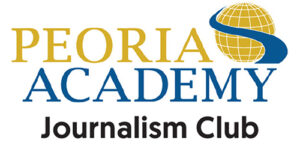 “In every seed of good there is always a piece of bad,”— Marian Wright Edelman
“In every seed of good there is always a piece of bad,”— Marian Wright Edelman
We have all spent countless hours scrolling on social media, but have you ever wondered about the negative or positive impact it can have on you? There are a multitude of problems with the social media industry. Along with those problems there are also numerous positive outcomes.
Many hours of children’s and adults’ days are spent on social media platforms such as TikTok and Instagram. According to Aljazerra.com, the typical adult spends 2.5 hours per day on social media. Forbes.com reports 17-year-olds spend upwards of four hours per day using social platforms, and that 13- to 19-year-olds spend a minimum of four hours per day on social media and an average of 4.8 hours each day.
TikTok has grown in popularity since its release date in 2016, with one billion users across the world, Forbes reports. According to the TikTok website, TikTok has evolved into the preferred platform for nearly five million businesses seeking expansion and success, including countless small businesses. TikTok has become the main source of income for many people around the world. According to the March 13, 2024, Washington Post, “TikTok drove $14.7 billion in small-business owners’ revenue in 2023 and contributed $24.2 billion to U.S. gross domestic product last year.”
In addition to helping the economy, social media also can be used for communication and education. People everywhere can spread messages around the world. Some social media influencers send messages of love and positivity or raise awareness of topics that are important to them. Numerous professionals post educational videos on the platforms. But be careful what information you choose to believe, because you can never really tell what is truthful, especially on social media.
The Journalism Club at Peoria Academy acknowledges that there is a dangerous side to social media, including TikTok. According to the Alan Turing Institute, nearly 90% of people between 18 and 34 years old have witnessed or received harmful content online at least once. The survey results also showed that two-thirds of all adults have seen or received harmful content online — including hate speech, false information, fake images and bullying — at least once.
Members of our Journalism Club have seen videos of parents exploiting their children for money. These videos include parents invading and sharing their child’s private thoughts or filming their children’s personal moments to get more views. Few of these children are earning a profit, despite the fact that they’re the entire reason those creators are so successful. These children are essentially child actors and should be covered under such laws.
Certain parents have even made their young children do suggestive things in videos. This is problematic because it can be damaging and traumatic for the children, especially when a child is young enough to not understand what their parents are making them do. We believe that TikTok should do a more efficient job at banning and filtering out these videos. Our Journalism Club has noticed that these videos can be extremely dangerous for children and impressionable young adults because there are influencers who take advantage of their audience and influence them to make harmful decisions.
It’s not just TikTok that’s the problem. There are also other platforms such as YouTube shorts, Snapchat, and Facebook which have inappropriate content and that is why it is important to make yourself aware of what you and your children are watching.
Social media is neither purely bad nor purely good. It can sometimes even be helpful because it is an important way to hear opinions of others. It is vital for us all to understand the impact of how we use social media on a daily basis.
Peoria Academy Journalism Club: Emelia Stevenson, Ammini Guzzardo, Ayeza Hamid, Isabella Williams, Sommer Jaffer, and Paige Mauritzson
